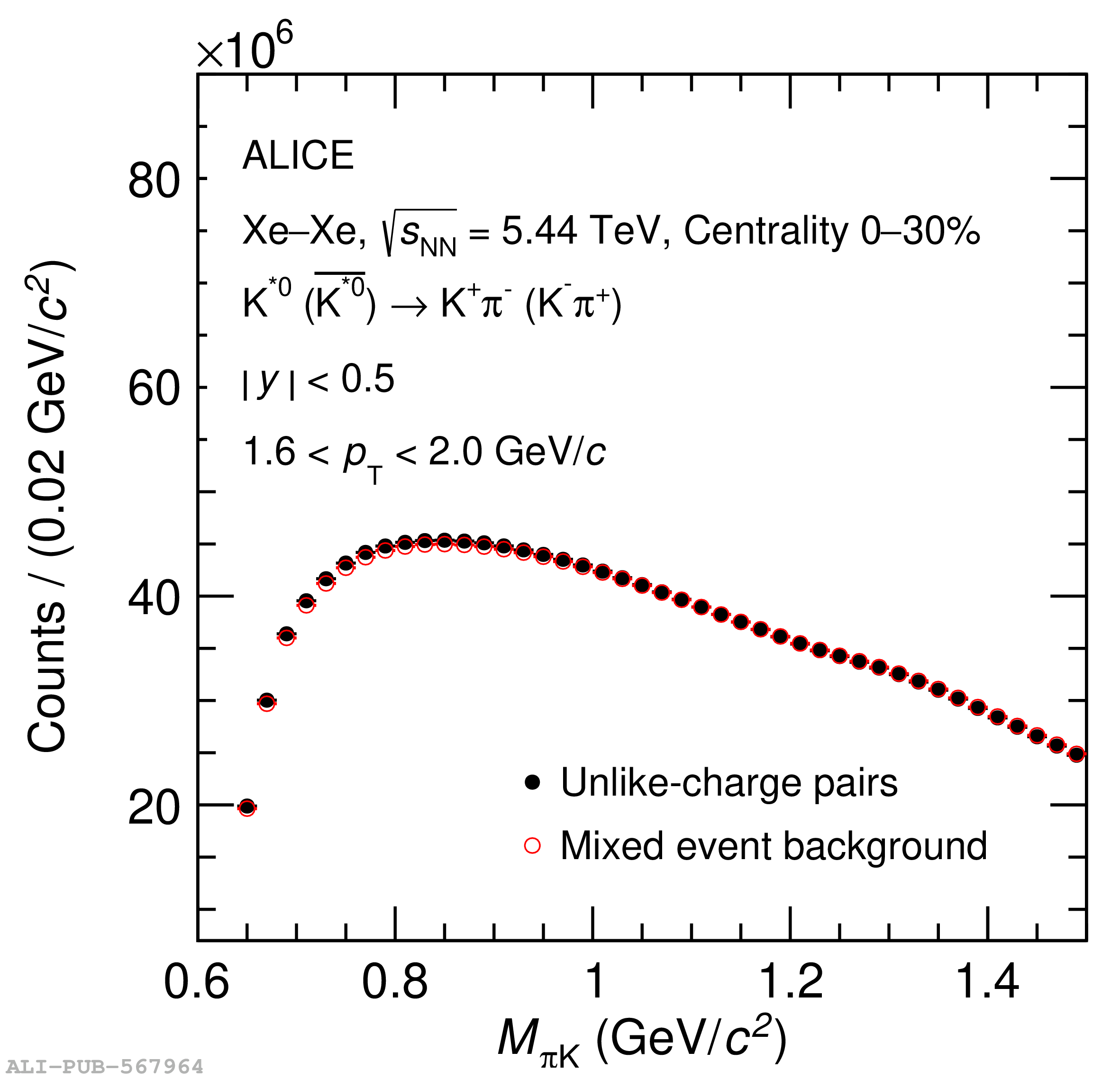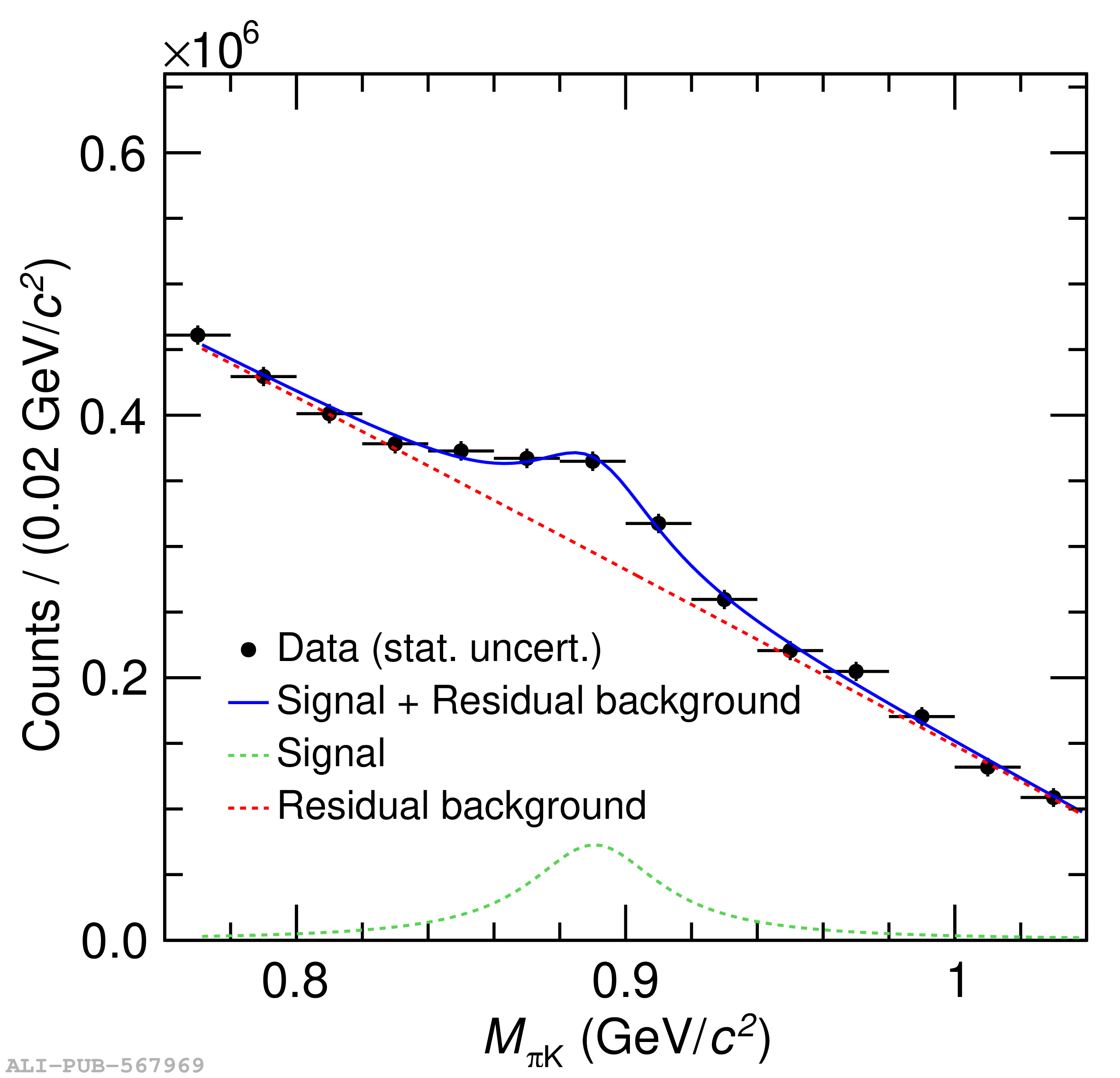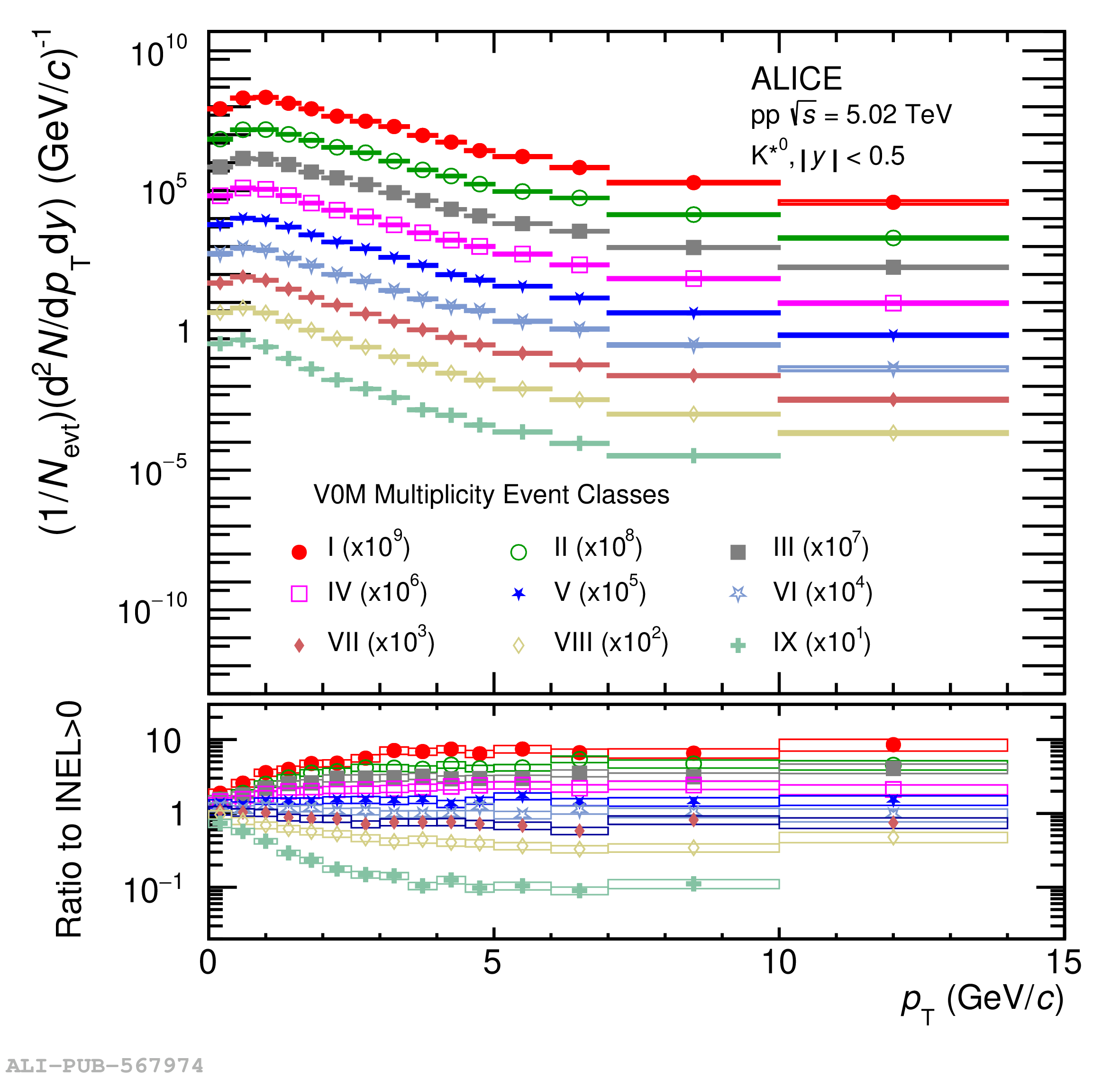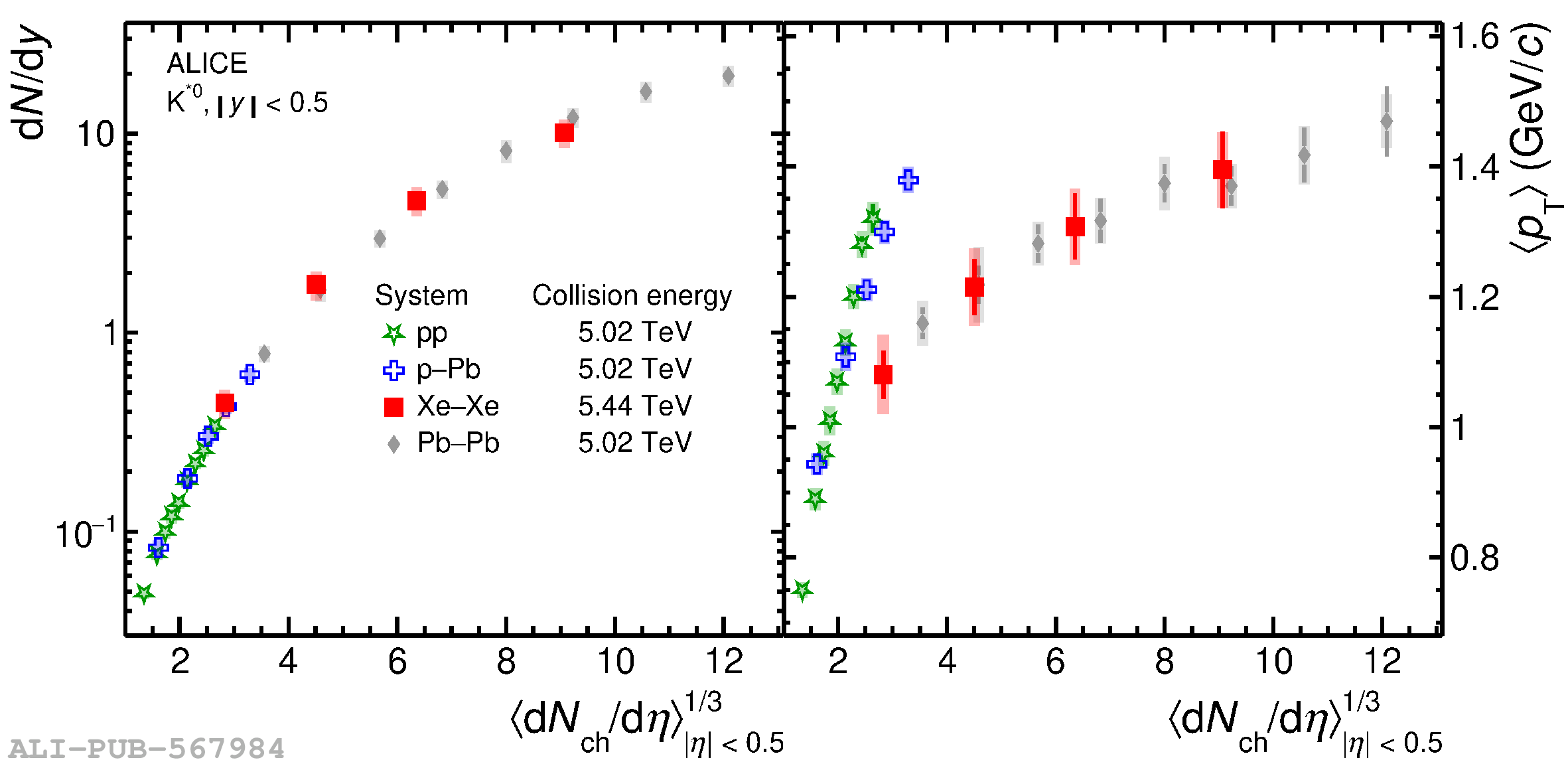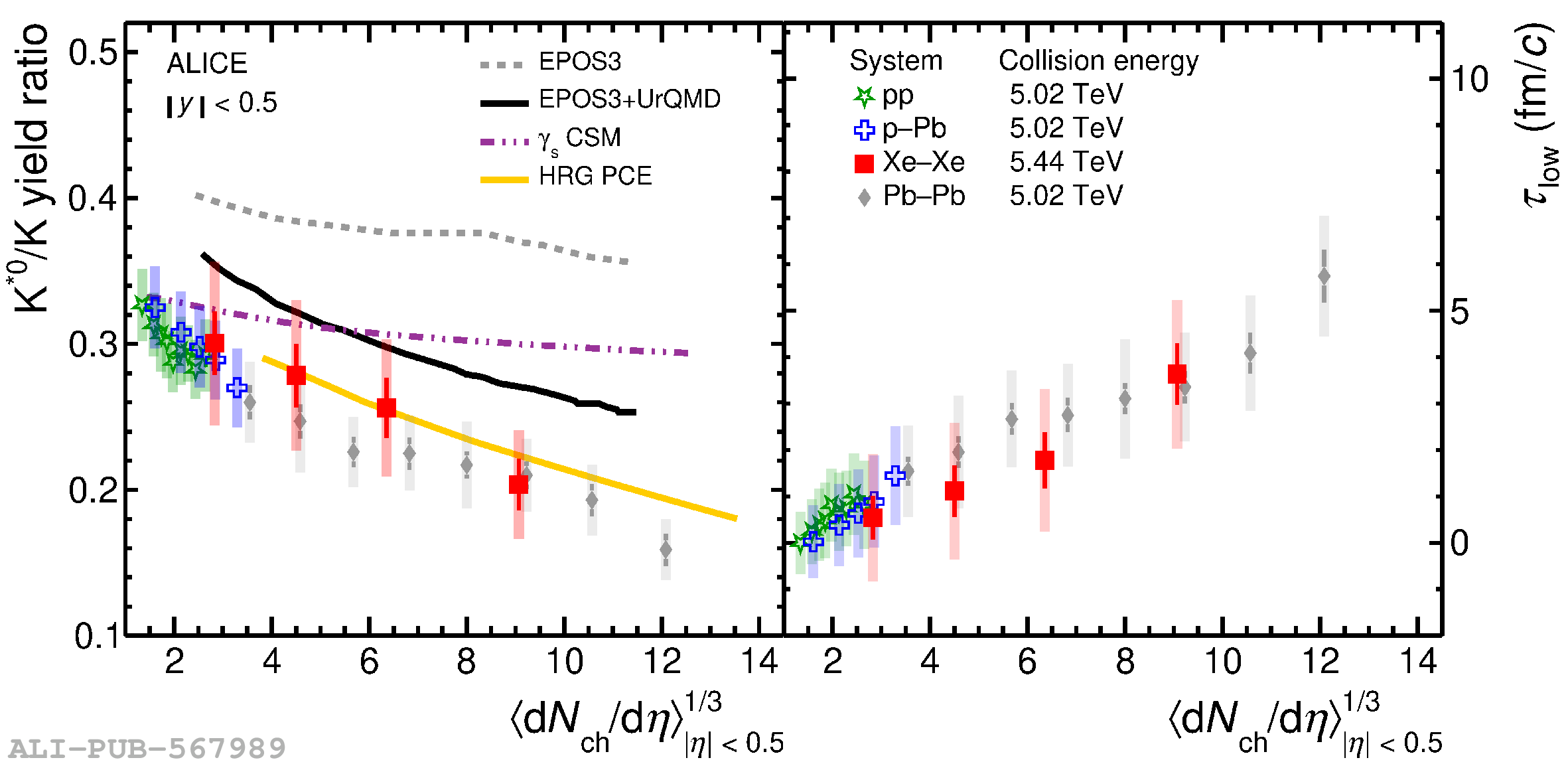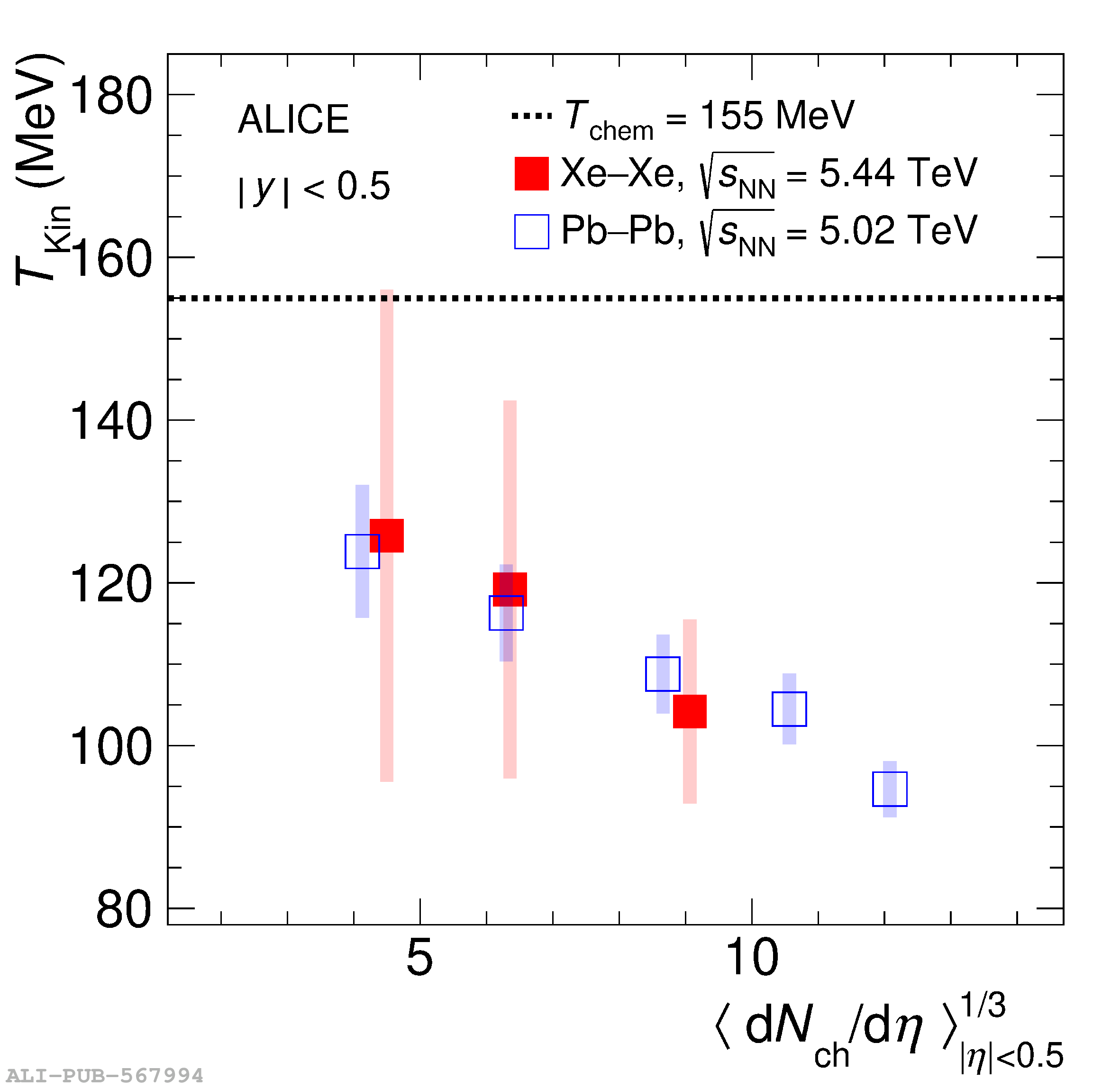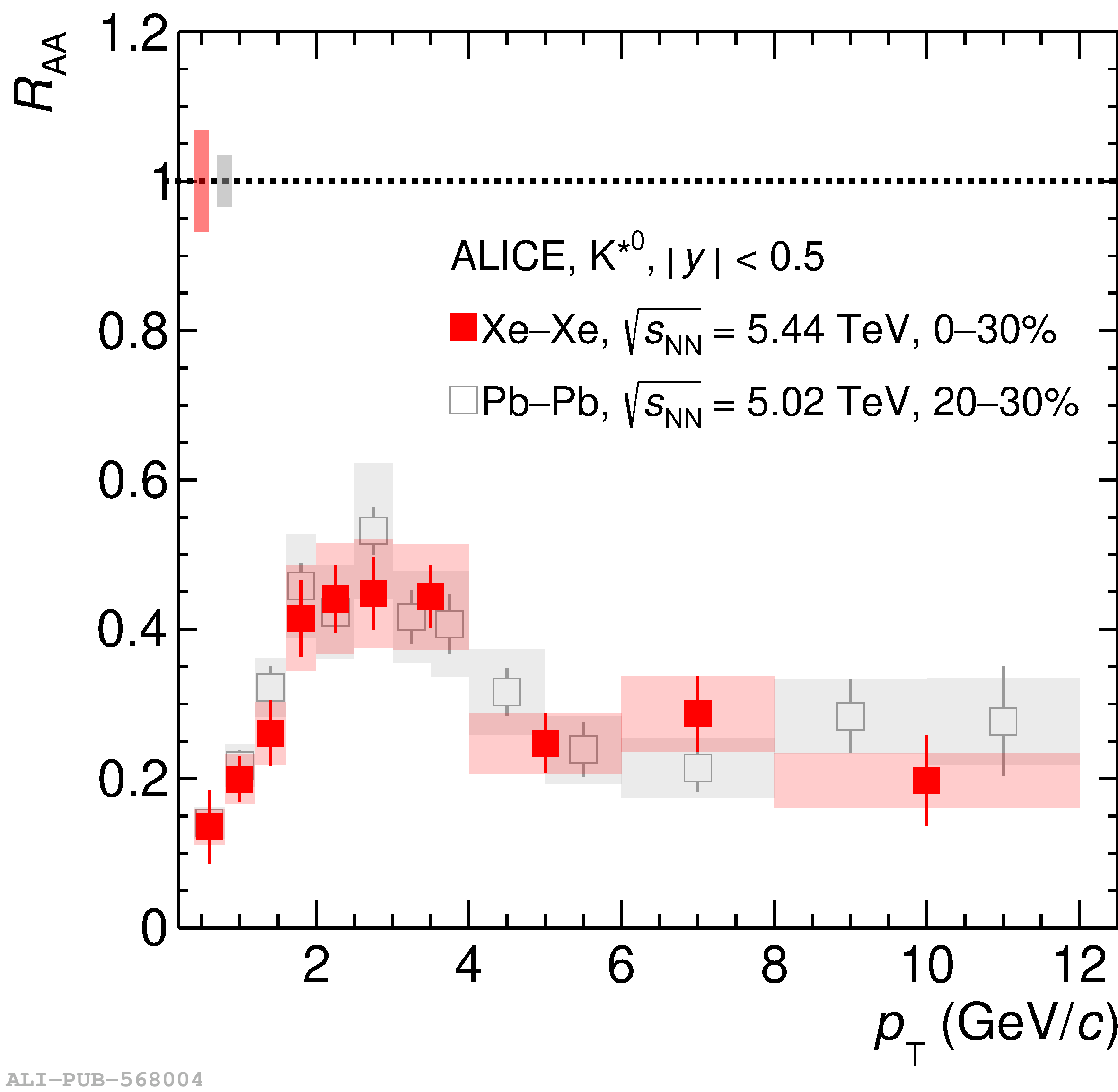The first measurements of $\mathrm{K^{*}(892)^{0}}$ resonance production as a function of charged-particle multiplicity in Xe$-$Xe collisions at $\sqrt{s_{\mathrm{NN}}}=$ 5.44 TeV and pp collisions at $\sqrt{s}=$ 5.02 TeV using the ALICE detector are presented. The resonance is reconstructed at midrapidity ($|y|<~ 0.5$) using the hadronic decay channel $\mathrm{K^{*0}} \rightarrow \mathrm{K^{\pm} \pi^{\mp}}$. Measurements of transverse-momentum integrated yield, mean transverse-momentum, nuclear modification factor of $\mathrm{K^{*0}}$, and yield ratios of resonance to stable hadron ($\mathrm{K^{*0}}$/K) are compared across different collision systems (pp, p$-$Pb, Xe$-$Xe, and Pb$-$Pb) at similar collision energies to investigate how the production of $\mathrm{K^{*0}}$ resonances depends on the size of the system formed in these collisions. The hadronic rescattering effect is found to be independent of the size of colliding systems and mainly driven by the produced charged-particle multiplicity, which is a proxy of the volume of produced matter at the chemical freeze-out. In addition, the production yields of $\mathrm{K^{*0}}$ in Xe$-$Xe collisions are utilized to constrain the dependence of the kinetic freeze-out temperature on the system size using the hadron resonance gas in partial chemical equilibrium (HRG-PCE) model.
Phys. Rev. C 109, 014911 (2024)
HEP Data
e-Print: arXiv:2308.16115 | PDF | inSPIRE
CERN-EP-2023-175
Figure group

